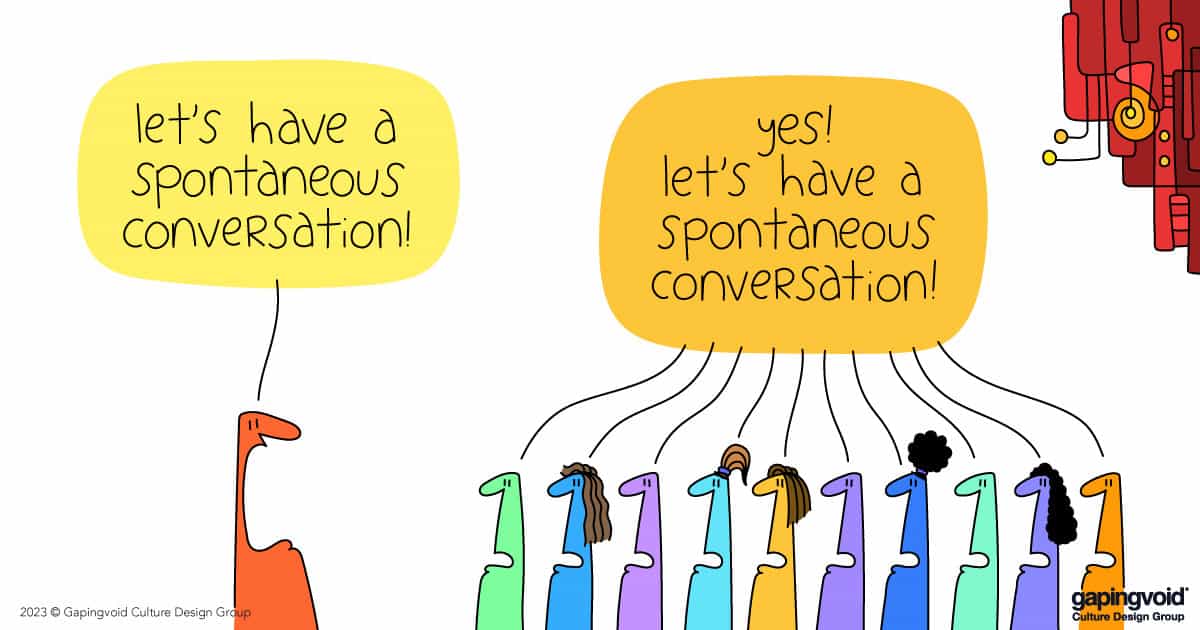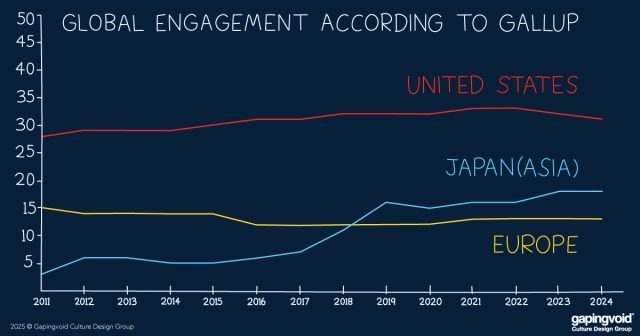
In the 1999 book, “The Cluetrain Manifesto,” Doc Searls famously wrote, “Markets are conversations.”
Buying a house requires a conversation between the buyer and seller about what kind of money needs to change hands.
When a fruit seller in a New York street market sells a pound of kale to a Brooklyn hipster, again, a conversation about price takes place.
Prices tend to be the result of many conversations about what the price should be. And on and on it goes.
But before you can sell something (either products or services), you actually have to make something first.
Therefore, conversations inside the organization need to be about more important things, like what we’re going to do, how we’re going to do it, who’s going to do the actual work, who’s going to sell it, who’s going to build the marketing campaign, etc.
This means that creating meaningful conversations, both internally and externally, is a big part of the job of any senior leader. It’s their job to create a culture where good discussions on all levels can take place.
And what is true at a cocktail party is true with businesses: the best conversations have a strong element of spontaneity about them.
But it’s hard for people to be spontaneous when they’re too busy watching their backs or being terrified of failure.
Better leadership
begets better culture
begets better spontaneity
begets better conversations
begets better collaboration
begets better business outcomes
We’re not saying “Let it all hang out,” we’re suggesting that spontaneity is a very important ingredient in creating value.
This means it can’t just be commanded into existence from on high or scheduled into a Gantt chart, it has to be built from the bottom up, at the cultural level.



